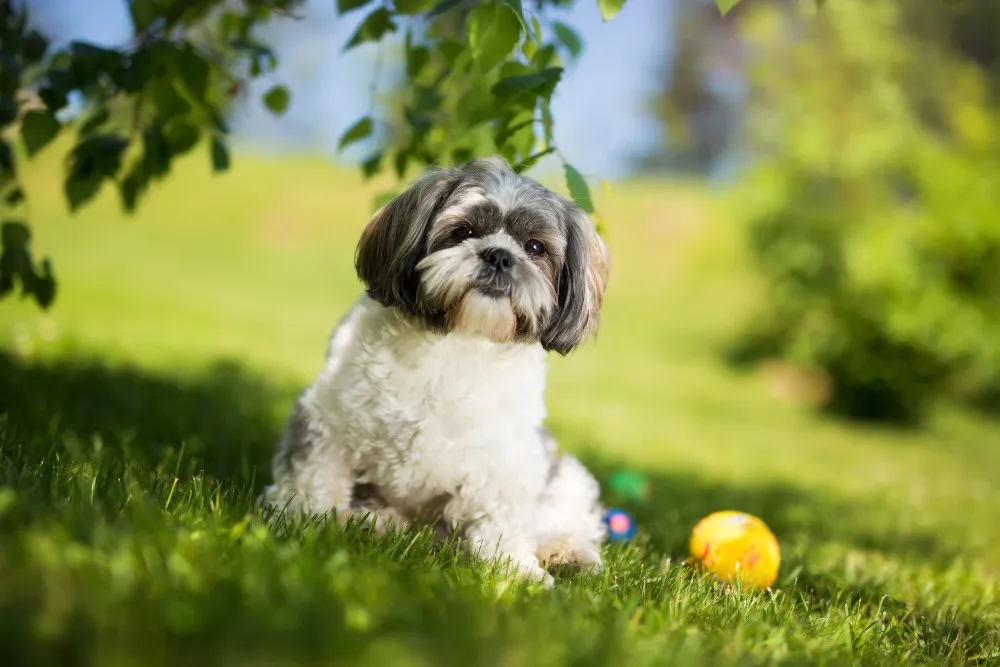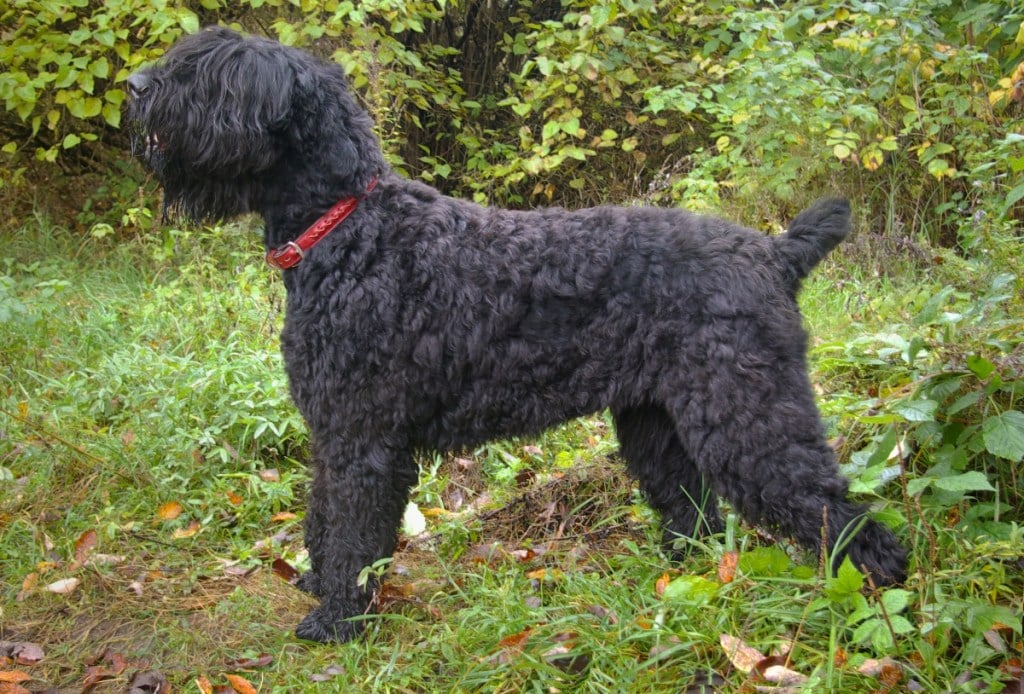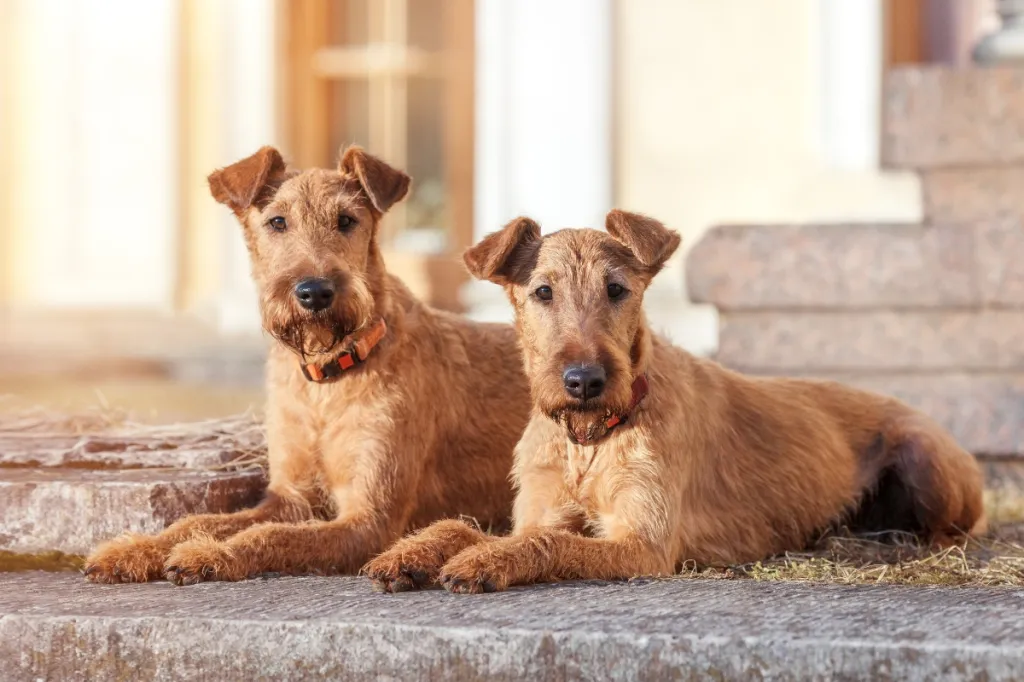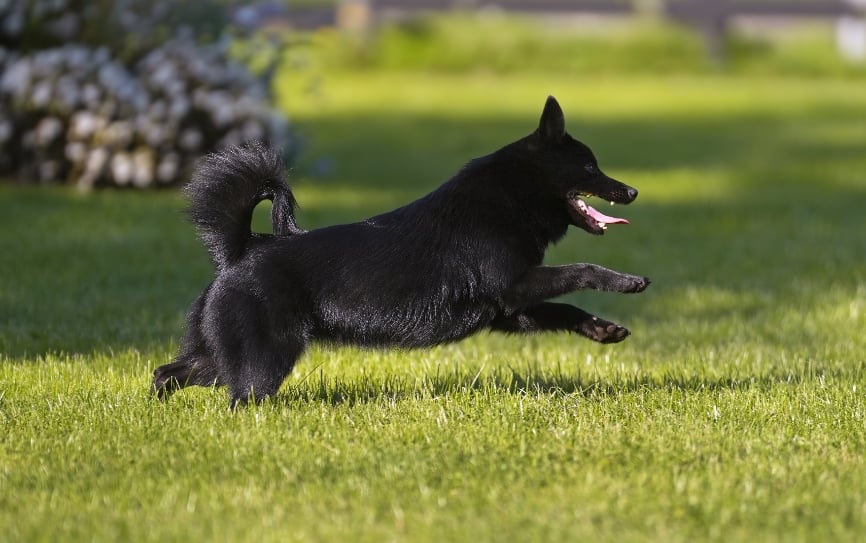Introduction to Shih Tzus
Well known for their long, flowing hair, Shih Tzus originated from East Asia but have become one of the most popular dog breeds in the U.S. The name “Shih Tzu” means “little lion,” which is an apt description for this beautiful little dog that is wonderfully playful and affectionate. Shih Tzus have big personalities and adaptable temperaments. They are classified in the toy group of dogs by the American Kennel Club.

Size of Shih Tzus
Shih Tzus are small dogs that generally weigh between 9-16 pounds when fully grown. However, a Shih Tzu’s weight will be influenced by the size of the parents, how much the dog eats, and how much exercise it gets.
| Weight Chart | 3 months | 6months | 12 months |
| Male and Female Shih Tzus | 3.9-7 pounds | 7.1-12.6 pounds | 8.8-15.9 pounds |
Characteristics of Shih Tzus
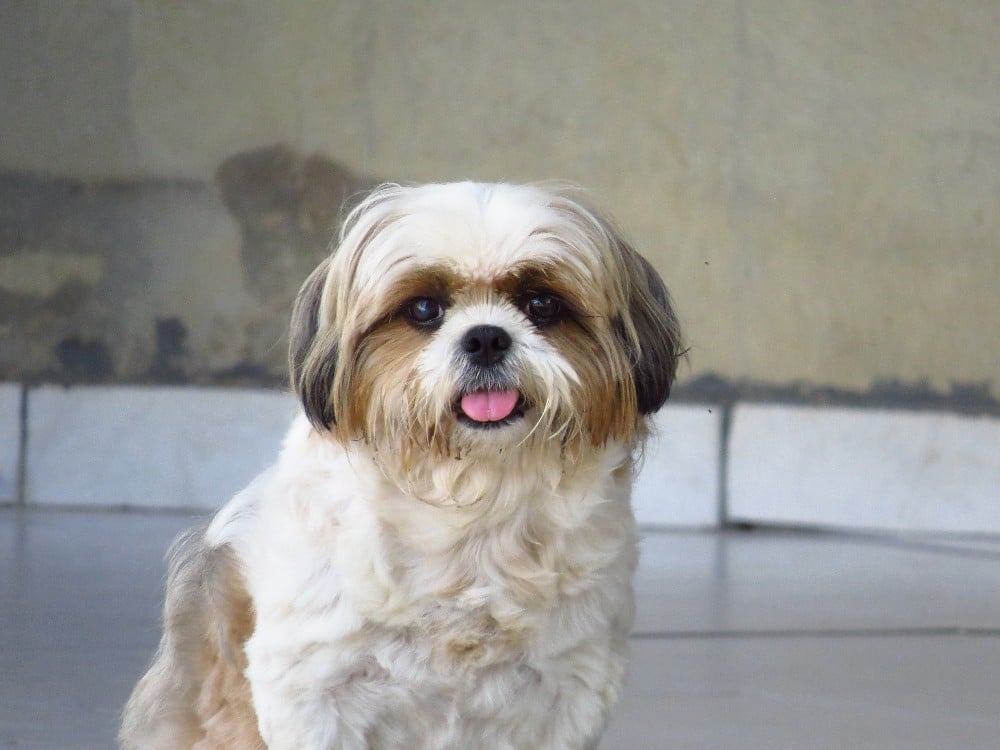
Although the Shih Tzu is named after a lion, nothing very fierce or intimidating about these adorable dogs. Shih Tzus are outgoing dogs that are commonly beloved as lapdogs, although they do well at agility competitions too. If you’re looking for an adaptable dog that is fine living in a small space with you and getting plenty of cuddles on the couch, a Shih Tzu might be your new best friend.
As you get to know a Shih Tzu’s personality, here’s what you can expect based on his or her breed characteristics.
| Breed Characteristic | Level (High, Medium, Low) |
| Affectionate with People | High |
| Good with Kids | High |
| Good with Pets | High |
| Need for Exercise | Low |
| Energy Level | Low |
| Intelligence Level | High |
| Able to Be Trained | High |
| Amount of Barking | High |
| Amount of Shedding | Low |
In addition to these characteristics, Shih Tzus are fairly low maintenance dogs for first-time pet parents. They are more okay with cold weather than hot weather, and they’re moderately sensitive dogs overall. Shih Tzus don’t drool much but grooming them definitely takes some time and patience. Although these dogs are playful, they don’t need a ton of exercise and are pretty easy to train.
History of Shih Tzus
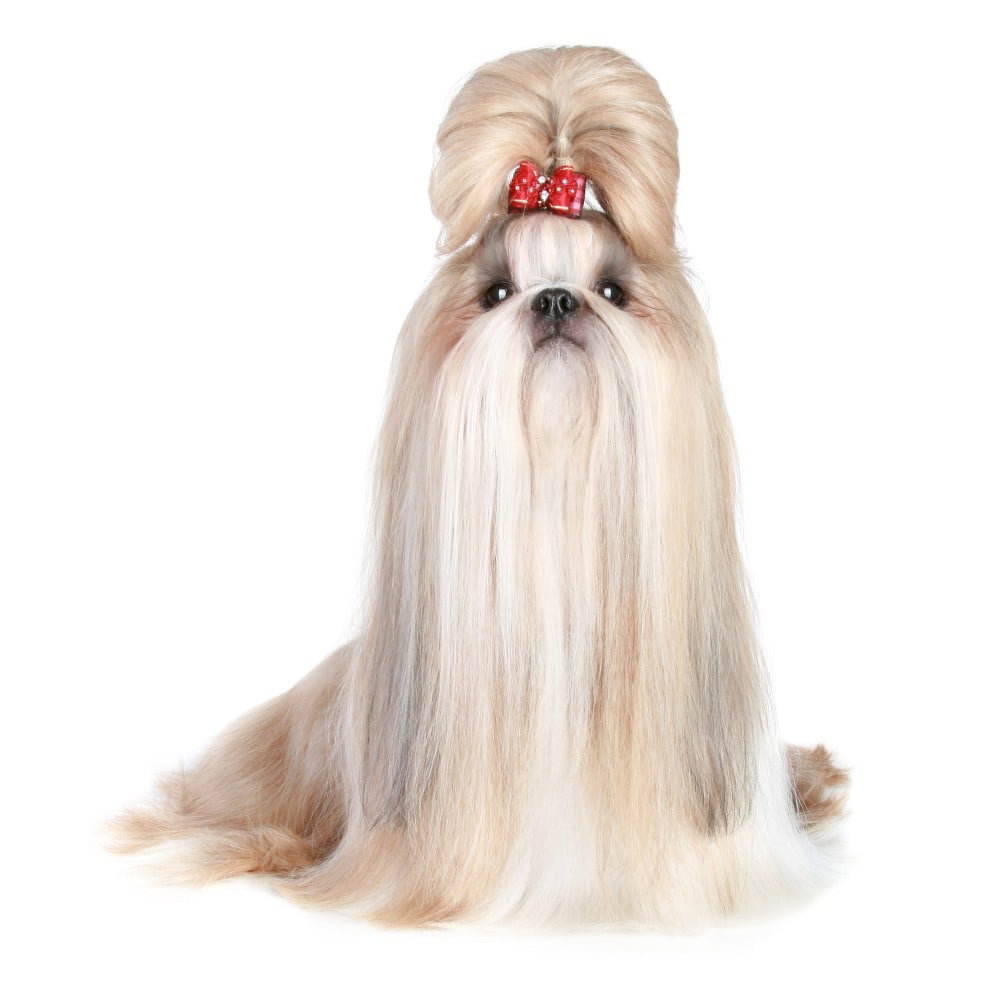
As their name suggests, Shih Tzus originate from East Asia and have been around for over 2,000 years. These dogs come from Tibet, which is just west of China, and then the Chinese began breeding them. The breed is one of the oldest in the world and likely the product of Sino-Tibetan breeds, the Pekingese, and the Lhasa Apso.
Shih Tzus served as lap dogs for royalty and were pampered because of their beauty. This breed stayed among the elite royalty in East Asia for centuries and really only became known elsewhere in the world in the 1900s. In the early 20th century during the Communist Revolution, the breed was almost entirely wiped out. The breeding program for these dogs was dismantled, but a group of just seven males and seven females were used to rebuild the breed so that people could enjoy these dogs again.
Shih Tzu dogs moved from China to England, and then to other European countries, and finally to the U.S. in the 1940s and 1950s. American soldiers brought these dogs to the U.S. after discovering them while they were serving in the military overseas. Today, Shih Tzus still have a royal, elite, and glamorous presence to them, and everyone from English queens to American pop stars have welcomed Shih Tzus into their homes.
Shih Tzus Standard Information
To be considered a Shih Tzu, a dog should have the standards of a prized palace pet with a long-flowing coat and lively personality. These dogs are solid and compact, with big, dark eyes and a charming vibe. According to the American Kennel Club, here is an overview of the official standard of the Shih Tzu.
Head:
- Round head with wide-set eyes
- Large and round eyes
- Warm and friendly expression
- Large ears set below crown of skull
- Short and square muzzle
- Undershot bite with broad jaw
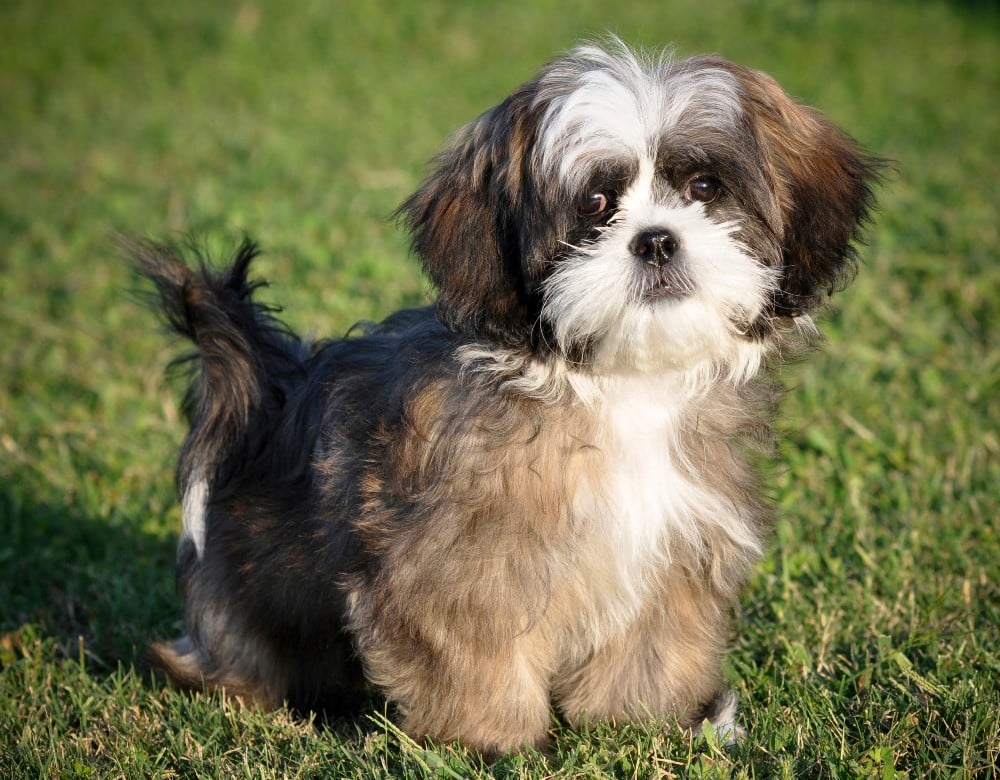
Neck, Topline, Body:
- High head carriage
- Level topline
- Short-coupled body that is slightly longer than tall
- High and heavily plumed tail
Forequarters and Hindquarters:
- Well-angled shoulders
- Muscular and straight hindquarters
- Firm and well-padded feet
Coat:
- Luxurious double-coat that is long and dense
- Slight wave permissible
- No excessive trimming
Color:
- All colors and markings permissible and equally considered
Gait:
- Effortless movement with good front reach and rear drive
- Level topline
- Naturally high head carriage
- Tail carried in gentle curve over back
Caring for Shih Tzus
Compared to other breeds of dogs, caring for a Shih Tzu is relatively easy. These dogs require only minimal exercise but do need regular grooming and preventative medical care. Here are some general tips for taking the best care of a Shih Tzu.
Best Living Environments:
- Apartments and small homes
- City environments
- In households with other dogs and kids
- Kept out of extreme heat and cold
- Limit interaction with strangers if not socialized early
Type of Exercise:
- Short walks around the neighborhood
- Fetch games inside the house or outside in a fenced yard
Mental Enrichment:
- Play with fetch toys
- Socialization with other dogs, children, and adults
- Needs frequent attention from family members
Training Strategies:
- Start at a young age
- Obedience and training classes
- May bark excessively without proper training
Grooming Tips:
- Frequent brushing and grooming is necessary
- Brush teeth daily or at least three times per week
- Clean ears each week
- Consider bathing as often as once per week
- Professional grooming is recommended
Common Health Problems of Shih Tzus
Some medical conditions are more common with Shih Tzus than other types of dogs. These are some of the most common health issues that arise with Shih Tzus.
- Skin allergies
- Liver disorder called portosystemic shunt
- Joint and bone issues
- Intervertebral disc disease
- Corneal injuries of the eye
- Kidney disease and kidney stones
- Cancer
- Brachycephalic syndrome (respiratory distress syndrome due to the short nose)
- Ear infections
- Dental disease
Yet overall, the Shih Tzu is considered to be a healthy breed of dog that will live a long and happy life with proper care. In fact, the life expectancy of a Shih Tzu is longer than that of other dogs and typically ranges from 10 to 18 years. With regular vet checkups and daily care, you can enjoy many wonderful years at home with your Shih Tzu.
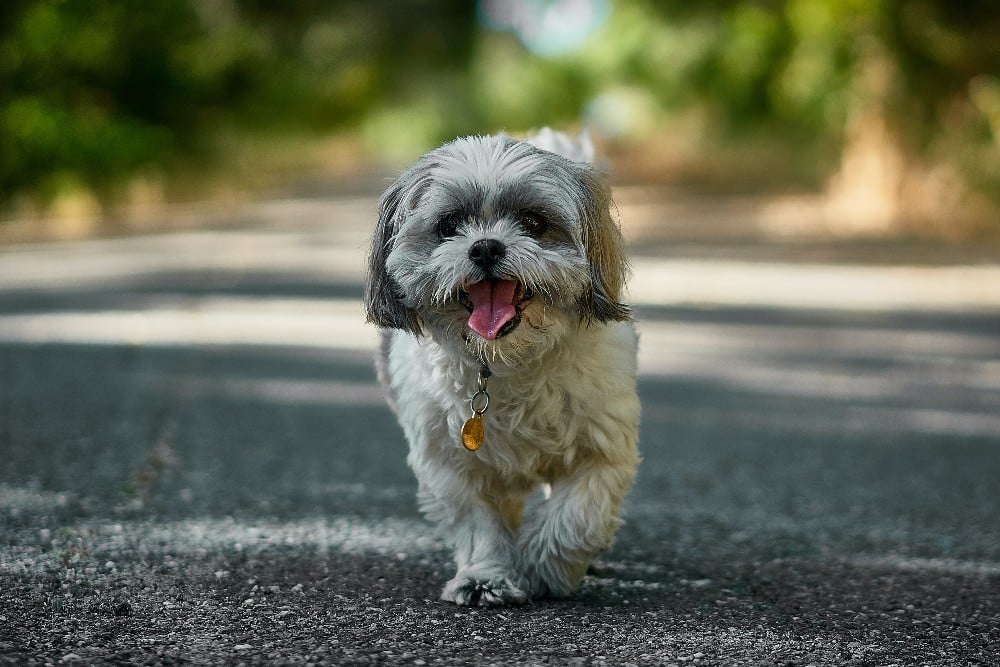
Diet and Nutrition for Shih Tzus
Shih Tzus need between ½ cup to 1.5 cups of high-quality dog food each day to thrive. You will need to adjust your Shih Tzu’s portions based on level of activity, age, size, and metabolism. The feeding guidelines on the food label are a helpful guide. Shih Tzus can be picky eaters and can have sensitive stomachs, so you might have to try a few different foods before discovering one that works well.
Limit treats and feed the appropriate amount each day to reduce the risk of unintended weight gain because it is easy to overfeed a Shih Tzu due to their small size. When a Shih Tzu becomes obese, it is more prone to health problems.
Vets often recommend feeding an adult Shih Tzu two times per day and puppies three to four times per day. This frequency of feeding can help a Shih Tzu avoid symptoms of hypoglycemia that can occur due to their small size.
Where to Adopt or Purchase Shih Tzus
The American Shih Tzu Club is a member of the American Kennel Club and offers Shih Tzu resources for prospective pet parents. The AKC Marketplace lists Shih Tzu puppies for sale in many different locations from reputable breeders. A purebred Shih Tzu puppy can cost you thousands of dollars, so make sure to choose a breeder that you can trust. Be sure to ask to meet the puppy’s parents and see a health certificate.
There are also rescue groups and local shelters available that can introduce you to a Shih Tzu near you. For example, Shih Tzu Rescue, Inc. is a nonprofit no-kill organization that lists dogs available for adoption. Tzu Zoo Rescue is another useful resource.
Related Breeds
If you are interested in Shih Tzus but not 100% committed to this specific breed, you might be interested to learn more about similar breeds of dogs that might be right for you. Here are some related breeds to the Shih Tzu for you to check out.
- Havanese
- Russian Tsvetnaya Bolonka
- Tibetan Terrier
- Lhasa Apso
- Tibetan Spaniel
Pet Insurance for Shih Tzus
Even generally healthy dogs benefit from having pet insurance coverage in case of an accidental fall of a high surface, accidentally ingesting something toxic, or chronic conditions that naturally become more of a risk with old age. The top-rated insurance plans from Healthy Paws cover everything from accidents to illnesses, cancer, emergency care, genetic conditions, and alternative care.
Take your Shih Tzu to any licensed vet you trust and enjoy a quick and easy claims process so you can focus your attention on your pet and not on the bills. Check Shih Tzu insurance rates on our website today to prepare for many great years together with your beloved Shih Tzu.
